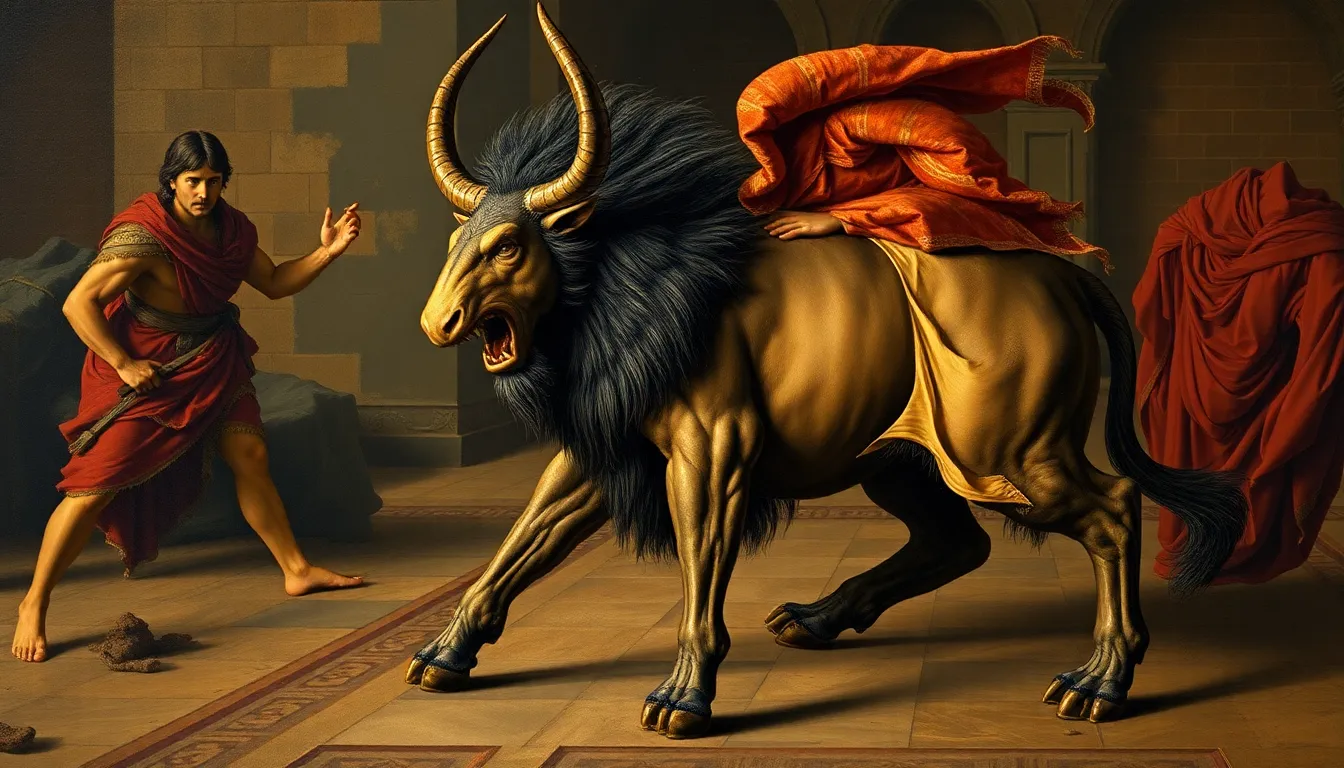The Minotaur in Renaissance Art: Reimagining the Beast
I. Introduction
The Minotaur, a creature with the body of a man and the head of a bull, is one of the most captivating figures in Greek mythology. Born from the union of Pasiphaë and a majestic bull, the Minotaur became synonymous with chaos and the labyrinth, a symbol of the darker aspects of human nature. This mythical beast has intrigued artists for centuries, especially during the Renaissance period, where the reexamination of classical themes led to a resurgence in the interest of ancient myths.
The significance of the Minotaur in Renaissance art lies in its embodiment of complex themes such as duality, inner conflict, and the struggle between civilization and savagery. This article aims to explore the Minotaur’s role in Renaissance art, the historical context of the period, and the lasting impact of this mythological figure on both historical and contemporary artistic expressions.
II. Historical Context of the Renaissance
The Renaissance, spanning from the 14th to the 17th century, marked a profound cultural revival in Europe. It was characterized by a renewed interest in classical antiquity, humanism, and the exploration of new artistic techniques. Artists sought inspiration from ancient Greek and Roman works, leading to a blossoming of creativity and innovation.
Classical mythology heavily influenced Renaissance artists, who often drew upon these ancient stories to convey deeper moral and philosophical meanings. The cultural shifts of this period encouraged a re-examination of mythical figures, allowing artists to reinterpret them through the lens of contemporary thought and aesthetics.
III. The Minotaur: Symbolism and Themes
The Minotaur serves as a powerful symbol of duality and the struggle between human and beast. As a hybrid creature, it represents the conflict within humanity itself—the constant battle between our civilized selves and the primal instincts that reside within us.
- Hybrid Creature: The Minotaur embodies the idea of being caught between two worlds, representing both human intelligence and bestial instincts.
- Themes of Duality: This creature illustrates the tension between civilization and savagery, reflecting our inner conflicts.
- Inner Conflict and Chaos: The Minotaur’s existence within the labyrinth symbolizes the chaos of the human psyche and the search for identity.
IV. Notable Renaissance Artists and Their Works
Many Renaissance artists explored the Minotaur motif, each bringing their unique interpretation to the figure. Notable artists include:
- Donatello: His sculptures often portrayed hybrid creatures, and while he did not create a direct depiction of the Minotaur, his works laid the groundwork for later interpretations.
- Albrecht Dürer: Dürer’s engravings and illustrations often featured mythical beasts, including the Minotaur, showcasing his talent for depicting intricate details.
- Pablo Picasso: Though a 20th-century artist, Picasso’s fascination with the Minotaur motif can be traced back to his engagement with Renaissance themes, illustrating the beast in various forms that reflect modern anxieties.
One of Picasso’s notable works is Minotauromachy, where he intertwines the themes of bullfighting and the Minotaur, reflecting on violence and human nature.
V. Artistic Techniques in Depicting the Minotaur
Renaissance artists employed various techniques when depicting the Minotaur, utilizing color, composition, and light to convey emotion and meaning.
- Color and Form: Artists used contrasting colors to highlight the Minotaur’s duality, often juxtaposing earthy tones with vibrant shades to represent its inner turmoil.
- Light and Shadow: The use of chiaroscuro emphasized the monstrous aspects of the Minotaur while also adding depth and dimension to the artwork.
- Evolution of Style: The transition from Gothic to Renaissance styles allowed for more realistic and dynamic portrayals of the Minotaur, moving away from the static representations of earlier periods.
VI. The Minotaur in Literature and Its Artistic Representation
The Minotaur’s impact extended beyond visual art into literature, influencing the narratives that artists would later illustrate. Classical texts, such as Ovid’s Metamorphoses and the myths of Theseus and the labyrinth, provided rich material for Renaissance artists.
Literary influences played a crucial role in shaping the visual representation of the Minotaur. Artists often drew on these texts to enhance the emotional depth of their works, creating a dialogue between literature and visual art.
VII. The Legacy of the Minotaur in Modern Art
The Minotaur motif continues to resonate in contemporary art, serving as a vehicle for exploring complex societal issues. Modern artists have reinterpreted the Minotaur in various ways, often using it to reflect on themes such as:
- Identity and Alienation: Artists explore the Minotaur as a symbol of the outsider, reflecting personal and societal struggles.
- Violence and Chaos: The figure represents the chaotic elements of modern life, serving as a commentary on contemporary issues.
- Timeless Symbol: The Minotaur’s enduring presence in art history illustrates its ability to adapt to changing cultural landscapes.
VIII. Conclusion
In summary, the Minotaur holds a significant place in Renaissance art, serving as a complex symbol of duality, chaos, and the human condition. Its reinterpretation during this vibrant period reflects broader cultural shifts and a renewed interest in classical mythology.
The lasting impact of the Minotaur on both historical and contemporary art underscores its status as a timeless figure that continues to inspire and provoke thought. The reimagining of mythological figures in art invites us to explore the depths of our own humanity, making the Minotaur a compelling subject for artists across the ages.




